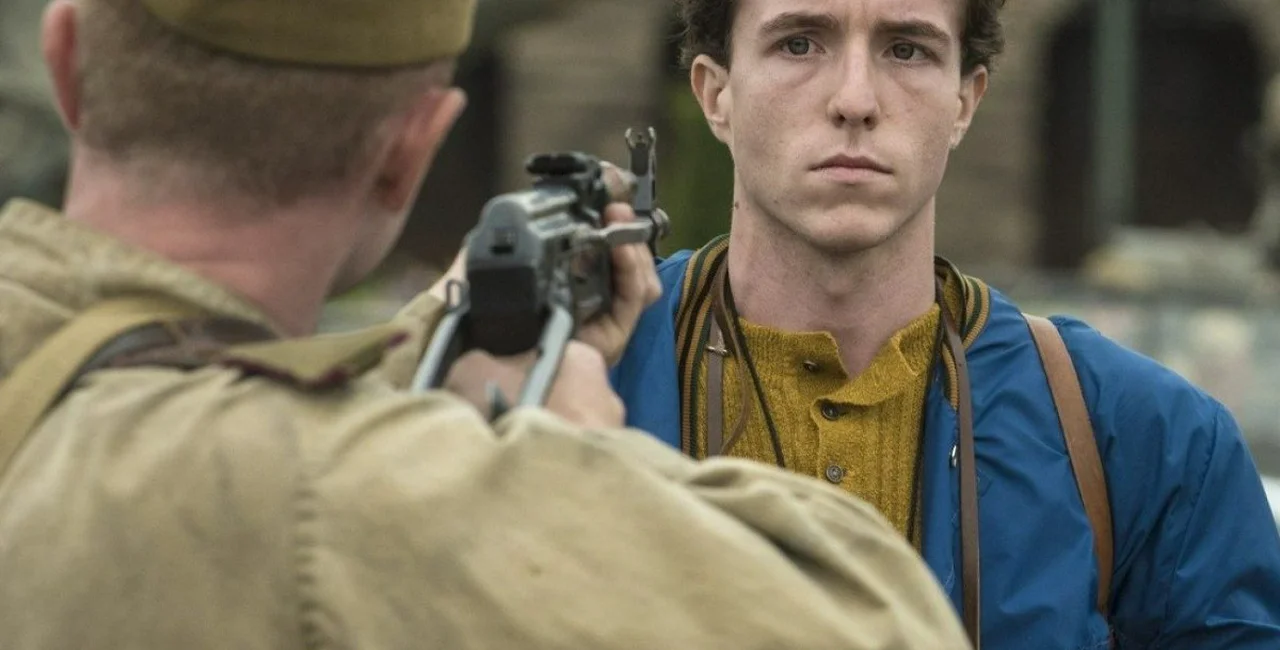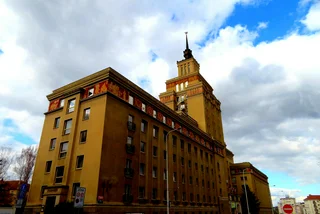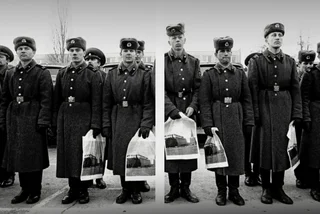History and economics student Jan Palach died Jan. 19, 1969, three days after setting himself on fire on Prague’s Wenceslas Square. He is seen as a national hero for taking a stand against the Soviet occupation of Czechoslovakia.
Palach wasn’t directly protesting the August 1968 Soviet-led Warsaw Pact invasion, which ended the Prague Spring reforms. He was upset about the Czechoslovak government’s complacency over the occupation in the months that followed.
This year will mark the 53rd anniversary of Palach’s death. Due to Covid restrictions, there will be no large public commemorative events, though politicians began laying wreaths at memorial sites on Jan. 16, the day of the self-immolation.
For those who are interested in learning more about the Jan Palach story or visiting the Prague monuments and memorials associated with the Czech martyr, we've compiled a list of public art, notable memorial events, and essential viewing.
A special concert called “Silence for Jan Palach” (Ticho za Jana Palacha) will be broadcast from Jan Palach’s birth house in Všetaty on Jan. 17 at 9:05 pm on ČT art. The house has been renovated with modern additions and is now part of the National Museum. It is open daily except for Mondays.
Those who prefer to stay home can also watch biographical films about Palach on Netflix and HBO. Both are slightly fictionalized for dramatic purposes, but convey the main point of the story.
The 2018 film “Jan Palach,” currently on Netflix with English subtitles, won the Czech Film Critics' Award for Best Film. It focuses on Palach’s life from 1967 onward when he was traveling for his studies. He was actually in France when the 1968 invasion occurred.
Unlike many Czechs who were in the west at the time, he chose to return. But he becomes disillusioned, as few people participate in protests. The film delves into his decision-making process leading up to his final act.
Director Agnieszka Holland’s 2013 miniseries “Burning Bush” (Hořící keř), on HBO Go with English subtitles, looks into the aftermath of Palach’s death. Young lawyer Dagmar Buresová – who after the Velvet Revolution would later become justice minister – represents Palach’s family in court. The family was trying to stop the communist regime from defaming Palach.
The film won 11 prizes at the Czech Lions, including Best Film and Best Director. A shortened feature-length cinema version of the miniseries also exists, but the miniseries goes into more detail.
For those who want to visit sites related to Palach, there are several in Prague and some outside the city as well.
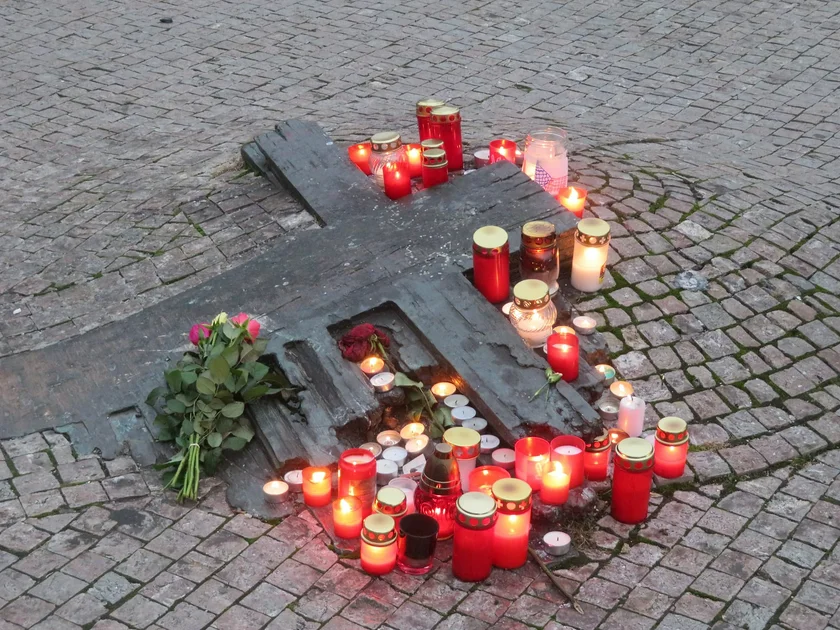
Three sites are located near the top of Wenceslas Square. The Monument to Jan Palach and Jan Zajíc in front of the Historic Building of the National Museum is the most popular spot to leave flowers. Jan Zajíc was another student who died in protest of the Soviet occupation. He set himself on fire on Wenceslas Square on Feb. 25, 1969, and died the same day.
The bronze cross, designed to resemble burnt wood, was designed by artist Barbora Veselá and architects Čestmír Houska and Jiří Veselý. It was installed on Jan. 16, 2000, near the spot where Palach set himself on fire.
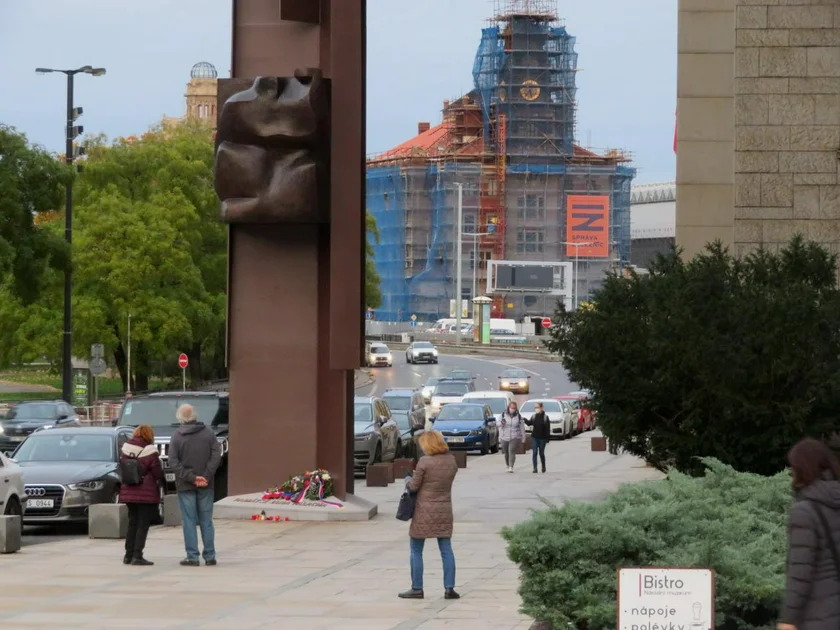
Across the street in front of the New Building of the National Museum is the newest memorial, though it was planned a long time ago. Flame (Plamen) was unveiled on a pillar on Jan. 17, 2020. The pylon has been in place since the 1970s.
The pylon was the work of architect Karel Prager, who oversaw the 1968–73 conversion of the former stock exchange into the Federal Assembly. The slender steel pylon, designed in 1968, was meant to resemble a flame whipping in the sky and was supposed to carry a granite sculpture by Miloslav Chlupáč called Flame.
After Palach’s death, Prager and Chlupáč wanted to dedicate the already planned pylon to Palach, as it was just a few meters from the site where he set himself on fire.
The idea was not approved by communist authorities, and flame sculpture was never installed. Plans for the sculpture were rediscovered in 2018, during research for the renovation of the pylon. The Flame could not be made out of granite as originally planned, as it would be too heavy, so it was made out of a sheet of bronze.
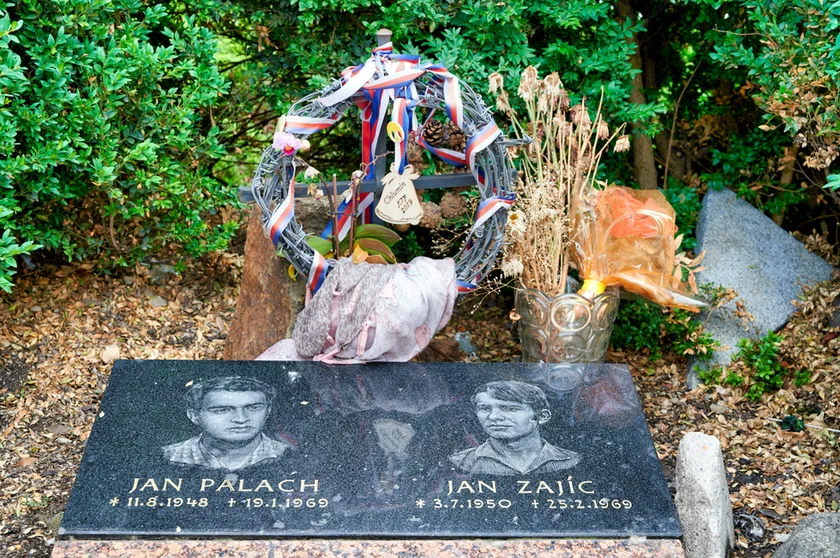
A third memorial is also in the same area. A small etched black stone plaque can be found in the middle of Wenceslas Square, in the greenery behind the statue of St. Wenceslas. It has pictures of both Palach and Zajíc, and their dates of birth and death. A red granite stone under it has an inscription in Czech, English, and German saying it is in memory of the victims of communism.
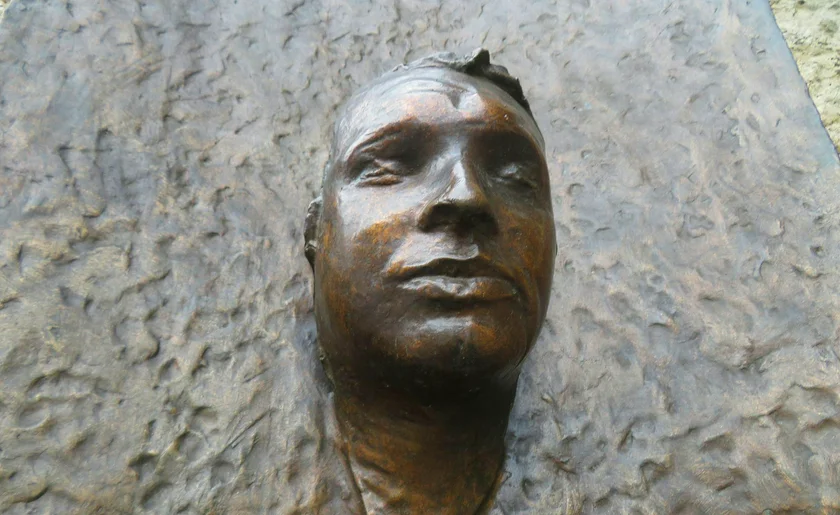
More memorials can be found near the Philosophical Faculty of Charles University, where Palach studied. The square in front of the building is called náměstí Jana Palacha. On the left side of the main entrance to the faculty, there is a bronze plaque with a copy of Palach’s death mask. The plaque by sculptor Olbram Zoubek was unveiled in January 1990.
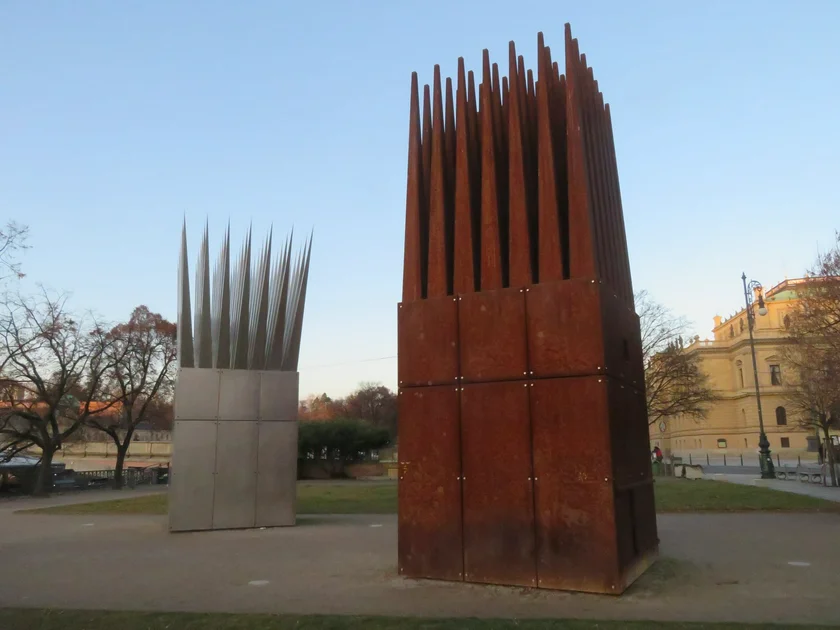
Next to the square, technically on Alšovo nábřeží, is the House of the Son and the House of the Mother, two sculptures by late American architect John Hejduk. They are cubes topped by spikes, meant to resemble buildings on fire.
They were installed in 2016, based on his earlier models. The houses, one polished and one rusted, symbolize Palach and his mother. While Palach shines on, his mother was left behind to face a life without her son.
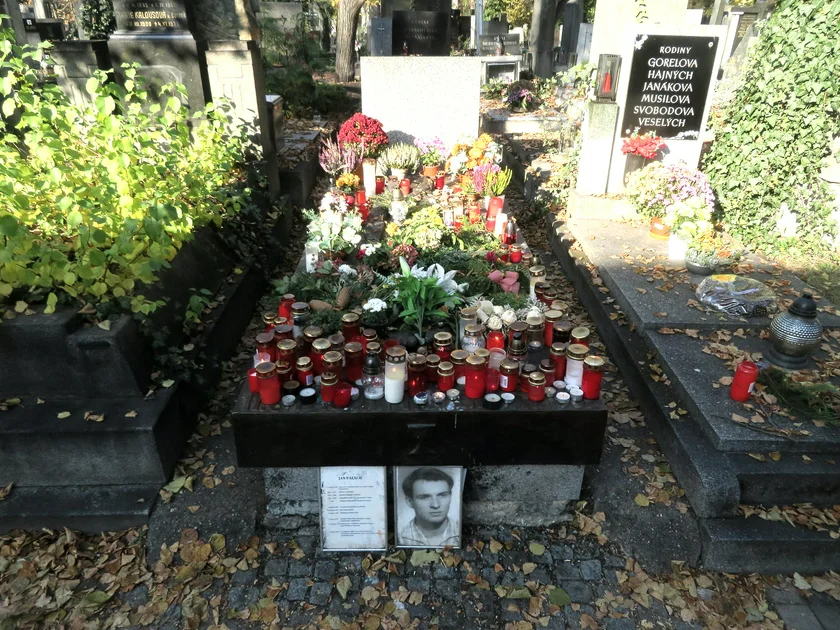
Palach’s grave in Olšanské hřbitovy in Prague’s Žižkov is also a popular spot for people to leave flowers. The grave is located near the cemetery’s main entrance in the second subdivision of section IX. The stone covering the grave was also designed by sculptor Olbram Zoubek, though candles and flowers usually hide the details.
At the Karolinum, the main building of Charles University at Ovocný trh, one can find a plaque marking where Palach’s coffin stood in 1969 for people to pay reverence. The plaque is 69 cm square, a reminder of 1969, and weighs 89 grams, a reminder of 1989. The work by artist Jakub Vlček was installed in 2019, on the 50th anniversary.
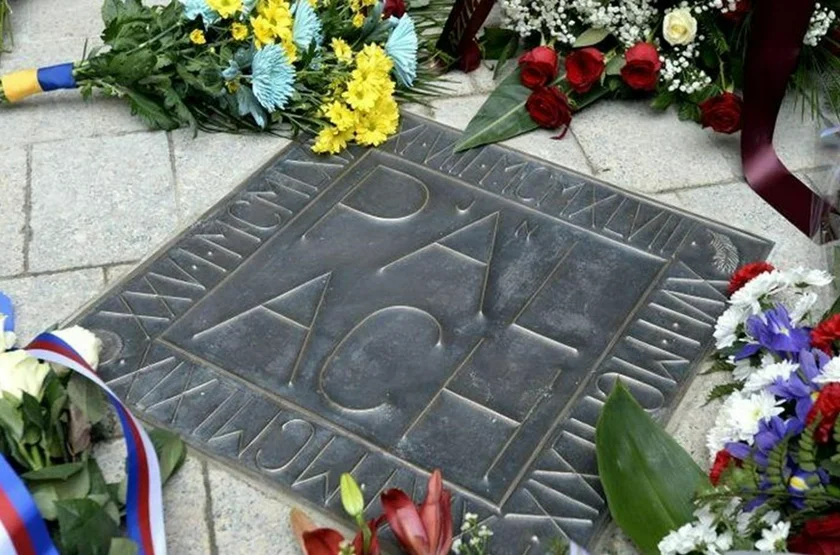
The permanent historical exhibition in the basement of the Karolinum has a few items that belonged to Palach, including his ID card. Currently, the exhibition is only open by appointment.
A British Pathé newsreel from 1969 shows people filing past the coffin and the subsequent funeral procession.
An unofficial street art memorial is at the side of the dilapidated Borůvkovo sanatorium on Legerova Street, the hospital where Palach died. It also commemorates priest Josef Toufar, a victim of a communist show trial who died in the same building. The mural has been there since 2014, and there have been calls to renovate the building into a museum.
There are several memorials outside of Prague. In addition to the birth house in Všetaty, there is a memorial in Mělník, across from where Palach went to secondary school in Jungmannovy sady.
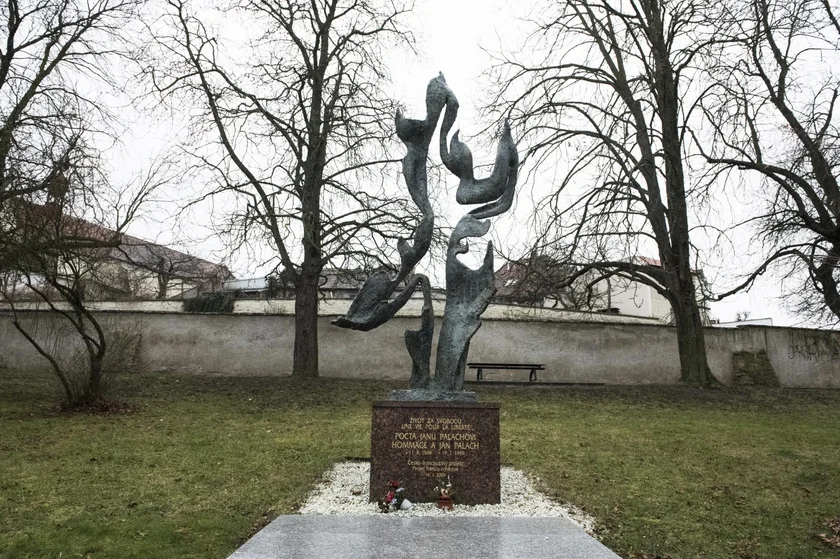
The work by Hungarian sculptor Andás Beck, in the shape of a flaming silhouette, was created in France shortly after 1969 but not installed in Mělník until 2009. It has an inscription in French and Czech saying: “A life for freedom. In memory of Jan Palach,” with the dates of his birth and death.
Another out-of-town memorial is in the Beskydy forest, just below the peak of Smrk mountain. A stone mound with pictures and a cross were placed by local people, who remember Palach on his birthday on Aug. 11. A similar mound nearby commemorates former Beatle John Lennon.












 Reading time: 6 minutes
Reading time: 6 minutes 